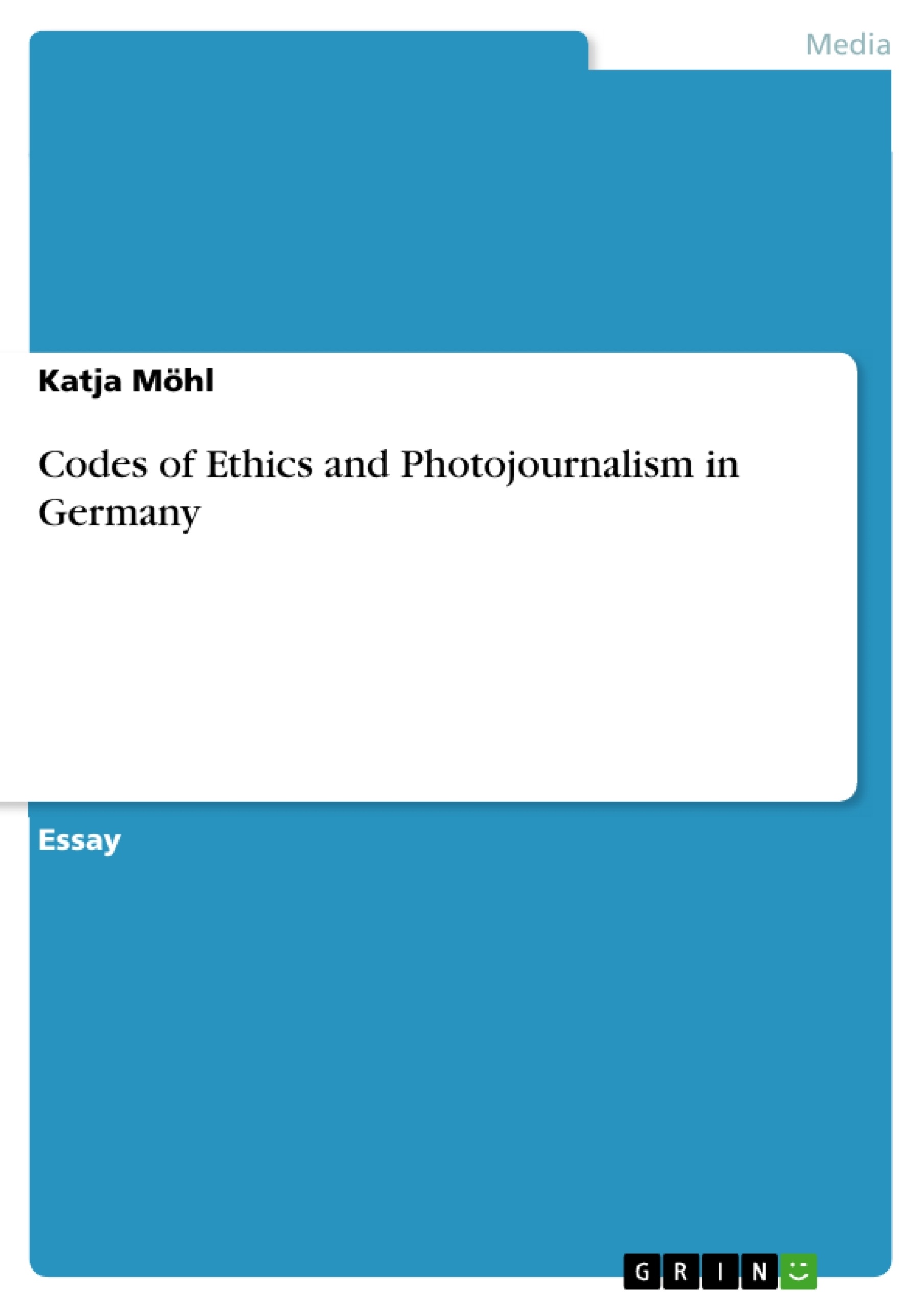1. Introduction
A lot of essays have been written, when it comes to the approach of codes of ethics in journalism. In globalizing times, where the Internet serves as an increasing news source, it is of importance to rethink the existing codes of ethics and to frame them in a broader, transnational context.
If this, sooner or later, leads us to a Global or European code of ethics, has also been one of the main topics in the media communication research field, as Tiina Laitila for example defines common journalistic codes of ethics within the European countries.1
But whereas common ethical rules and guidelines regarding journalism in general seem more clear and discussed in several studies, ethical codes in terms of photojournalism are still not defined in a normative way. Especially in times of the digital age and its mistrust it brings concerning digital photography, there is an increasing need of clear ethical guidelines for photojournalism.
To demonstrate the importance of codes of ethics in photojournalism, the impact visual images possess, will be discussed and reconsidered in the beginning. On the basis of these ideas, this essay will examine whether or not ethical codings exist in the field of photojournalism with a special emphasize on Germany.
It will be analyzed, if a German code of ethics can be defined, or if a broader, transnational code of ethics can be assigned regarding photojournalism.
As a concluding part, the conduct of photographic codes of ethics will be discussed with the help of single conflict images.
If a photojournalist respects the rules of codes of ethics or not, doesn't make his or her work often easier. Especially when it comes to war or conflict reporting, journalists often have the dilemma about how to behave as a photographer in critical situations.
Images, as for example the worldwide discussed picture of the starving child in Sudan taken by Kevin Carter in 1993(2), made us aware of the ambivalent decisions journalists often need to make. In comparison to print, news photography is morally challenging and often difficult to judge, considering the obvious participation of the photojournalist. The taken picture in its visual expression clearly interweaves the journalist in a more public way than it confronts print journalists. Publishing a picture with your name, shows actually that you, as a journalist, have been on location, which demands immense responsibility and commitment.
[...]
Inhaltsverzeichnis (Table of Contents)
- Introduction
- The Power of Photography
- Codes of Ethics in Photojournalism
- Codes of photojournalistic Ethics
- Codes of photojournalistic Ethics in Germany
- The Conduct of Ethics and Photojournalism
- Conflict reporting
- Conclusion
- References
Zielsetzung und Themenschwerpunkte (Objectives and Key Themes)
This essay aims to explore the ethical considerations surrounding photojournalism, particularly in Germany. It delves into the power of photographic images, the lack of defined ethical guidelines in photojournalism compared to traditional journalism, and the challenges of upholding ethical codes, especially in conflict reporting.
- The impact and power of photographic images in shaping public perception.
- The need for clear ethical guidelines for photojournalism in the digital age.
- The challenges and dilemmas faced by photojournalists in upholding ethical codes, particularly in conflict reporting.
- The role of media institutions in mediating and justifying the publication of photographs.
- The potential for photographic imagery to contribute to stereotyping and prejudice.
Zusammenfassung der Kapitel (Chapter Summaries)
- Introduction: This chapter establishes the context for the essay, highlighting the growing need for ethical guidelines in photojournalism, especially in the digital age. It also underscores the importance of examining photojournalistic ethics in a broader transnational context.
- The Power of Photography: This chapter delves into the influence and impact of photographic images on society, focusing on press photography. It explores the inherent power of photographs to shape our understanding of events and the role of photographers in framing reality.
- Codes of Ethics in Photojournalism: This chapter investigates the presence or absence of ethical codes within photojournalism, particularly in Germany. It explores the potential for a German or transnational code of ethics to govern the practice.
- The Conduct of Ethics and Photojournalism: This chapter examines the practical application of ethical codes in photojournalism, particularly in conflict reporting. It analyzes the ethical dilemmas faced by photojournalists in critical situations, highlighting the complexities of decision-making in such contexts.
Schlüsselwörter (Keywords)
Photojournalism, ethics, digital age, conflict reporting, photographic images, media institutions, stereotyping, prejudice, transnational codes of ethics, Germany.
- Arbeit zitieren
- Katja Möhl (Autor:in), 2010, Codes of Ethics and Photojournalism in Germany, München, GRIN Verlag, https://www.grin.com/document/164556



